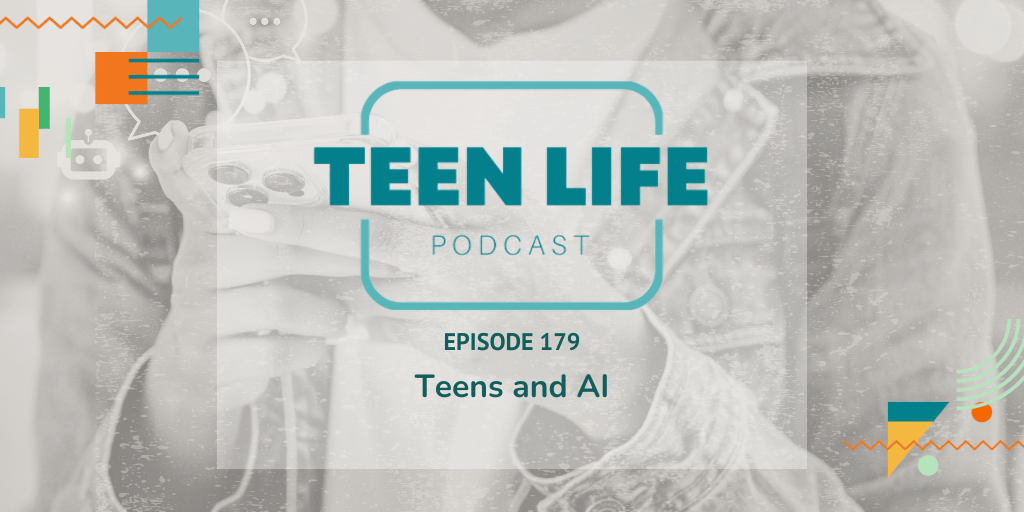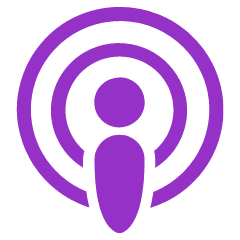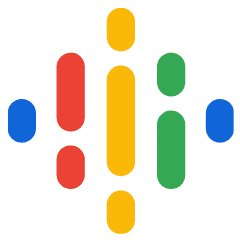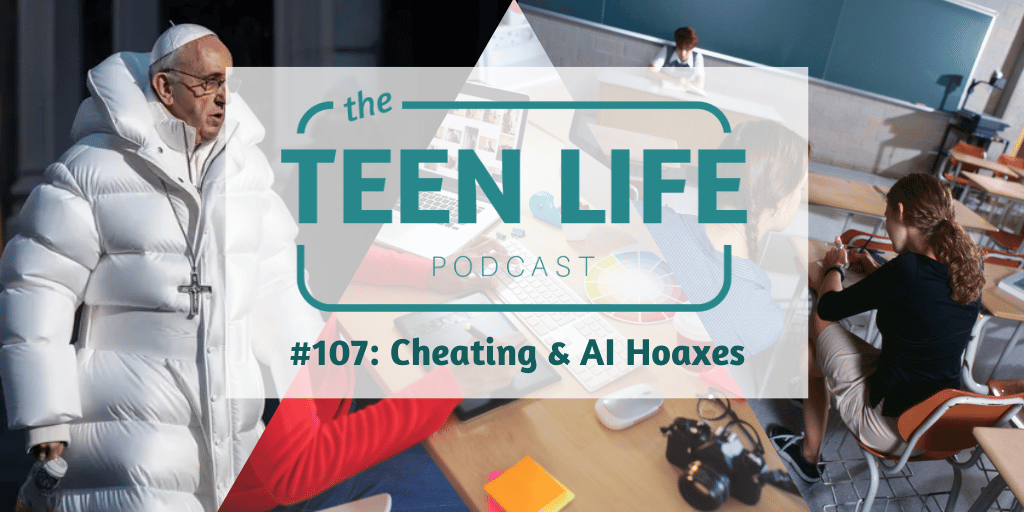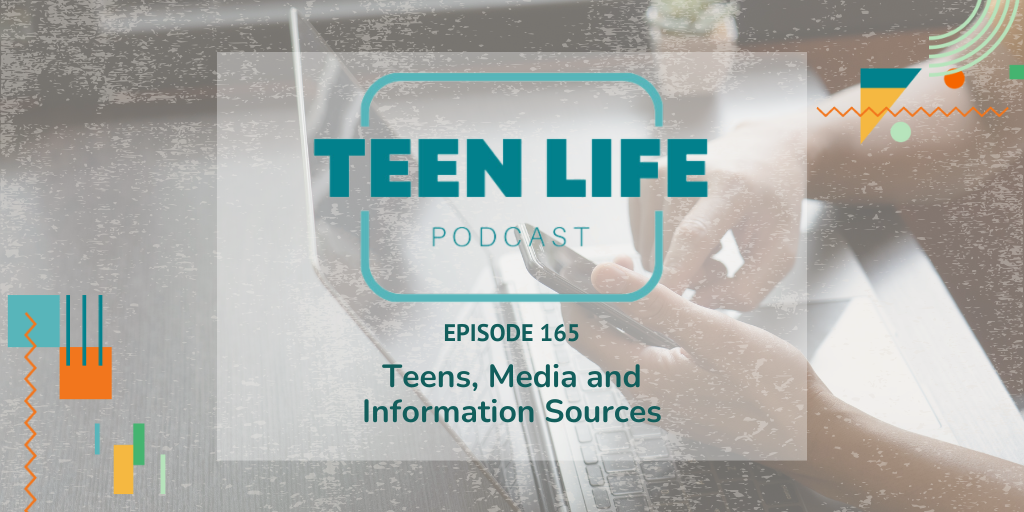Podcast: Play in new window | Download
What to Worry About and What to Celebrate with Teens and Artificial Intelligence
If you’re around teenagers much, you’ve probably heard them mention AI—whether it’s ChatGPT, an art generator, or a Snapchat filter.
For some adults, the rise of artificial intelligence feels unsettling, like a loss of the “good ole days.” But here’s the truth: AI isn’t going anywhere. Instead of fighting against it, we can shift our perspective and ask: How can we help teens use it wisely, safely, and in ways that actually benefit them?
Key Question
How are teens actually using AI, and what should we be worried about?
What We Cover
00:00 Understanding AI’s Role in Teen Lives
04:14 The Pros and Cons of AI Companions
06:07 The Dangers of Emotional Attachment to AI
09:12 Academic Integrity and AI’s Impact on Learning
10:45 The Future of AI in Creative Industries
11:42 The Absurdity of AI Prompts
14:01 The Dangers of Misinformation
16:47 Cognitive Skills and AI’s Impact
19:59 Benefits of AI in Education
22:52 Navigating AI in the Classroom
24:58 Empowering Teens in the Age of AI
What AI looks like in a teen’s daily life.
AI Companions
Chatbots designed to simulate friendship, therapists, or even romance. This one is huge. Chatbots are currently integrated into nearly every platform you can think of. Meta is pushing them as companions for kids on Facebook and Instagram. Most customer service platforms are using them at least in the early stages of problem-solving. You might not even realize that it’s a chatbot!
Generative AI
You’ve probably heard a lot about this one as it relates to school. Teens are using tools like ChatGPT or Gemini that create text, essays, or poems.
Homework Help
Integrated into a lot of school/information-based platforms, but also found in search engines and chatbots. AI can provide quick answers, summaries, and explanations.
Art Generation
Platforms that turn text prompts into illustrations, logos, or digital art.
Social Media Filters
AI-driven filters that alter appearances and create effects.
Creative Projects
Music generation, video scripts, or design inspiration.
Search engines
With AI baked into Google and other platforms, nearly every search is influenced by it. It’s always important to click on the links it provides, because many of them don’t exist at all.
The Potential Dangers
Like any powerful tool, AI comes with risks—especially for impressionable teens:
- Emotional attachment: Many teens are forming unhealthy bonds with AI companions and using them to substitute human relationships. Because AI companions’ objective is to be pleasing, they trigger the cue and reward system in the brain, which easily leads to addiction.
- Plagiarism: With 97% of Gen Z students reportedly using AI for homework, many of them copying and pasting directly from AI tools, academic dishonesty is a real concern.
- Misinformation: AI-generated responses can be wrong, misleading, or biased.
- Inappropriate content: Teens can stumble into disturbing or harmful responses, including tips on how to self-harm and hide injuries, how to acquire illegal drugs or weapons, pornography, and more. Teens are also creating inappropriate content using other teens’ and adults’ images. Depending on the state, this can have very severe consequences and definitely merits a conversation.
- Over-reliance for mental health: Turning to AI instead of trained counselors can backfire. AI has been recorded encouraging self-harm in minors and mistrust of parents and other adults.
- Decreased cognitive skills: Studies suggest overuse may erode critical thinking.
The Benefits (Yes, There Are Some!)
Not all AI use is negative. In fact, when guided, teens can benefit greatly:
- Personalized learning: AI can break down complex topics in simpler ways.
- Creative exploration: Teens can make art, music, or stories they couldn’t have created otherwise.
- Skill-building for future careers: Exposure now helps them prepare for an AI-driven workforce.
- Brainstorming: Whether for essays, projects, or ideas, AI can spark creativity.
- Research support: When used wisely, it’s a tool for gathering and synthesizing information.
AI can jumpstart writing projects, provide personalized feedback on rhetoric, grammar, and even how to improve foreign language skills. At times, it can generate fresh ideas, or simplify research. When managed well, it can be a useful companion tool, rather than a crutch.
Teaching Teens AI Literacy
Instead of just banning it, we can teach how to use it.
Here are 3 key points to touch on:
- Critical thinking: Always ask, “Does this make sense?”
- Fact-checking: Verify claims with reliable sources.
- Bias awareness: AI reflects human bias—teens need to recognize that.
Perspective Shift
Artificial intelligence isn’t going anywhere. So instead of mourning the “good ole days”, let’s find ways to make it work for us!
TL Tips & Takeaways:
Here are a few practical steps adults can take today:
1. Set guardrails
Use age-appropriate settings, boundaries, and clear school guidelines (like when AI is off-limits for homework). Just keeping screens out of bedrooms and bathrooms makes a huge difference.
2. Stay Engaged
Adults need to understand what AI can do–it’s potential benefits and pitfalls, too. It’s hard to guide teens if we don’t understand the tools ourselves.
3. Normalize Conversations
A good, neutral poker face is crucial. Be shock-proof. Instead of fear, open dialogue about what teens are creating, learning, or curious about with AI.
Some Last Thoughts
Whether or not artificial intelligence is a force for good in your life, it is a force to be reckoned with. Any teen who has internet access should be aware of the potential benefits and harms of using AI.
It’s our job as caring adults to be a source of good information, and most importantly, a safe place for teens to ask questions.
With the increasing prevalence of AI companions, search engines, and generative AI, it’s more important than ever to not only be available, but to be actively seeking healthy, open connection with teens.
While AI can be used for good, the risk is high that its overuse will become an experience thief in the lives of our teens.
Let’s help them think critically about the pros and cons of the tools they use and the motivations behind them.
Links & Resources:
- Parents: More Kids Are Turning to AI Companions—And It’s Raising Red Flags
- APNews: Teens say they are turning to AI for friendship
- APNews: New study sheds light on ChatGPT’s alarming interactions with teens
- Washington Post: What is ‘AI psychosis’ and how can ChatGPT affect your mental health?
- NY Post: Startling 97% of Gen Z students are using AI to write essays, do homework — and even get into college
- NPR: How an AI-generated summer reading list got published in major newspapers
- TIME: A Psychiatrist Posed As a Teen With Therapy Chatbots. The Conversations Were Alarming
- TIME: ChatGPT May Be Eroding Critical Thinking Skills, According to a New MIT Study

Karlie Duke
Communications Director

Tobin Hodges
Program Director

Caleb Hatchett
Podcast Host
Karlie Duke | Director of Communications
Karlie has always had a heart for teenagers. Through her role at Teen Life, she loves to showcase the amazing stories coming out of Support Groups, but she is especially passionate about helping adults and teenagers find connection. Karlie has a BS in Communications with a minor in Family Studies from Abilene Christian University.
Caleb Hatchett | Podcast Co-Host
Caleb loves helping teenagers take ownership of their faith and relationships. He graduated from Abilene Christian University with a degree in Youth and Family Ministry and is currently Student Ministry Director at Jenks Church in Oklahoma.
Tobin Hodges | Program Director
Tobin’s entire career has been centered around students and teens from all walks of life. He has a passion for helping teens be their best selves. As Program Director, he loves working directly with school staff and students through Teen Life Support Groups. Tobin has a Bachelor’s Degree in Music from Texas Tech University.
